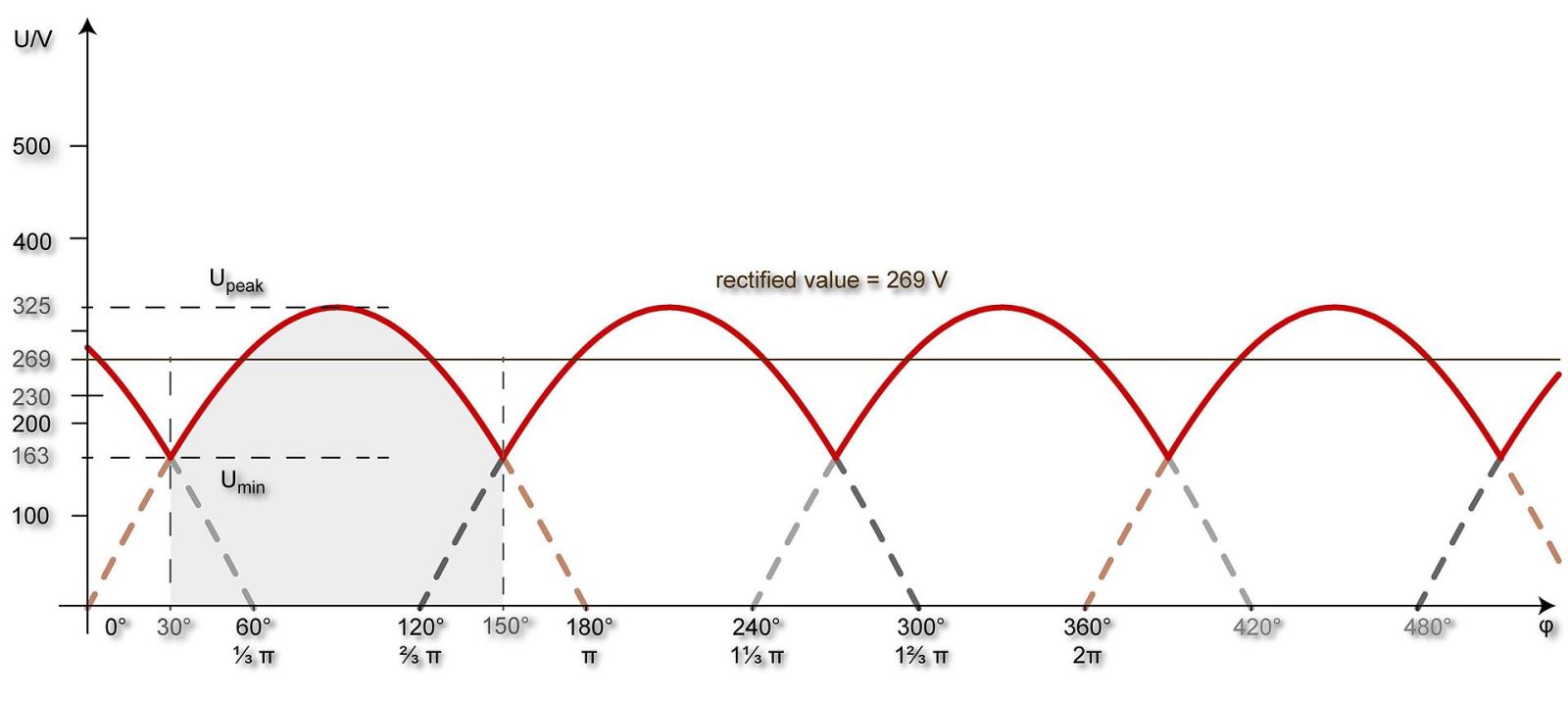
Jul 06,2023

 of this three-pulse DCvoltage are calculated from the RMS value
of this three-pulse DCvoltage are calculated from the RMS value  of the input phase voltage (line to neutral voltage, 120V in North America, 230V within Europe at mains operation):
of the input phase voltage (line to neutral voltage, 120V in North America, 230V within Europe at mains operation):  . The average no-load output voltage
. The average no-load output voltage  results from the integral under the graph of a positive half-save with the period duration of
results from the integral under the graph of a positive half-save with the period duration of  (from 30˚ to 150˚):
(from 30˚ to 150˚):